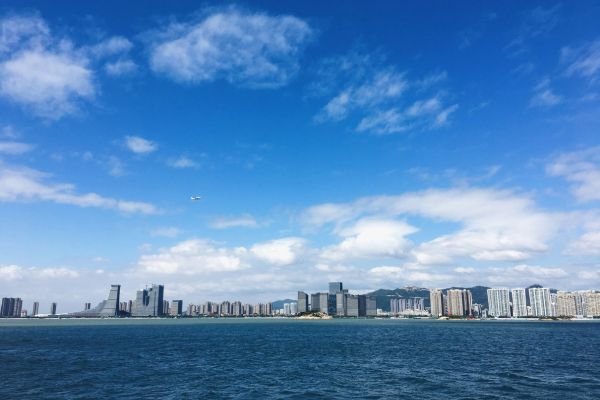
The first anniversary of China International Commercial Courts is an important opportunity to recall what has happened in one year’s time.
Related Posts on CICC Case Tracking Series:
- CICC Case Tracking Series - 03: China’s Second International Commercial Court (As of 20190821)
- CICC Case Tracking Series – 02: On Jurisdiction with Asia Optical as an Example
- CICC Case Tracking Series - 01: China’s First International Commercial Court (As of 20190821)
I. Basic System
On 23 January 2018, the comprehensively deepening reform leadership group meeting of the Communist Party of China (CPC) Central Committee was held to adopt the "Opinions on the Establishment of 'the Belt and Road Initiative' International Commercial Dispute Settlement Mechanism and Institutions"(关于建立“一带一路”国际商事争端解决机制和机构的意见) (hereinafter referred to as the "Opinions"), which proposed the establishment of China International Commercial Court (CICC) and promoted the establishment of a diversified dispute settlement mechanism that connects litigation with mediation and arbitration, as well as the basic principles of "efficient, convenient, and low-cost" that should be followed in its operation.
On 25 June 2018, China's Supreme People's Court (SPC) promulgated the judicial interpretation of "Provisions of the Supreme People's Court on Several Issues Regarding the Establishment of International Commercial Court" (最高人民法院关于设立国际商事法庭若干问题的规定) (hereinafter referred to as the "Provisions"), which is the basis for the establishment and operation of the CICC. These two documents lay the foundation for the establishment of the CICCs.
On 29 June 2018, the First International Commercial Court of the SPC was established in Shenzhen, southern China, and the Second International Commercial Court was established in Xi'an, western China. According to the speech of the SPC judge Ding Guangyu (丁广宇) at the 2019 Annual Meeting of China Society of Private International Law, there is a certain division of case distribution between the two international commercial courts, though it is not strict. Specifically, the scope of the cases is mainly divided between the two courts in accordance with the routes of the Belt and Road Initiative: the cases involving the route of "the Road" are heard by the First International Commercial Court, and the cases involving the route of "the Belt" are handled by the Second International Commercial Court. (The "Belt" refers to the overland routes for road and rail transportation, called "the Silk Road Economic Belt"; whereas the "road" refers to the sea routes, or the 21st Century Maritime Silk Road.)
In November 2018, the SPC successively released the "Procedural Rules for China International Commercial Court (For Trial Implementation)"(国际商事法庭程序规则(试行)), "Working Rules of the International Commercial Expert Committee (For Trial Implementation)" (国际商事专家委员会工作规则(试行)) and "Notice on inclusion of the First Group of International Commercial Arbitration and Mediation Institutions in the 'One-stop' Diversified International Commercial Dispute Settlement Mechanism" (关于确定首批纳入“一站式”国际商事纠纷多元化解决机制的国际商事仲裁及调解机构的通知). These three documents mainly stipulate the following items: (1) the working procedures of the acceptance, service, pre-trial mediation, trial, enforcement, and using arbitration to resolve disputes in the CICC; (2) the functions and composition of the International Commercial Expert Committee; (3) the first group of arbitration and mediation institutions that are included in the "one-stop" diversified international commercial dispute settlement platform.
It is worth noting that unlike other international commercial courts where disputes are normally resolved through only one method (i.e. litigation), the CICC has reinforced a diversified international dispute settlement mechanism. According to Article 11 of the Provisions, the SPC selects qualified international commercial mediation and arbitration institutions, which could jointly establish with the CICC a dispute settlement platform for integrating mediation, arbitration with litigation, in order to provide options for the parties to resolve their own disputes.
II. Organizational Structure
1. Level of trial
According to Article 1 of the Provisions, "The International Commercial Court is the standing judicial organ of the Supreme People's Court", which clarifies the nature of the judgments and rulings made by the CICC are those of the SPC. The first instance is final and the parties have no right of appeal. Nevertheless, pursuant to Article 16 of the Provisions, if the judgment, ruling and settlement statements have taken legal effect, the parties may apply to the SPC for retrial. (For more info on retrial, please refer to the CJO's previous post on China's trial-level system for civil cases)
2. Composition of judges
The SPC appointed a total of 14 Chinese judges as the CICC judges respectively in July and December 2018. (For the list of CICC judges, please click here.)To ensure that the judges of the CICC have a background in compound expertise, the judges come from different trial divisions.
All judges, without distinction between the First and Second Commercial Court, are collectively known as the judges of the CICC. With rich judicial experience, the judges are familiar with international treaties, international practices as well as international trade and investment practices. They are also proficient in using Chinese and English as working languages.
The reason why the CICC judges are Chinese judges is that Chinese judges must have Chinese nationality in accordance with China's Judge Law.
Besides, in addition to hearing cases, the CICC judges' main tasks also include dealing with the consultation from the parties as well as external publicity and communication.
3. Expert Committee System
In order to address any deficiencies due to the lack of foreign judges in the CICC, the CICC has pioneered the establishment of International Commercial Expert Committee System.(For the CICC Expert Directory , please click here.)
On 26 August 2018, the International Commercial Expert Committee was officially established. Now, the CICC expert committee is comprised of 31 Chinese and foreign members. They come from different legal systems, 14 countries and regions, including the heads of major international institutions, legal experts, experienced judges and lawyers at home and abroad. These expert members are both well versed in international law and their own national laws, and have rich practical experience as well as high international influence.
Correction: 19 August 2019
An earlier version of this post said 31 Chinese and foreign experts were appointed as the first group of expert members in 2018. That’s not true. In fact, the number of CICC expert committee members was 32 in the beginning. Later, one member (Mr. Sundra Rajoo) has been removed. Now, the CICC expert committee is comprised of 31 members. We apologize for the error.
The duties of the expert members include: presiding over mediation, providing expert opinion on the ascertainment of foreign law, and providing expert opinion to the CICC and the SPC.
III. Operating Mechanism
1. Jurisdiction
According to Article 2 of the Provisions, the CICC exercises jurisdiction over the following five types of cases: i. International commercial cases of first instance where the parties have chosen to be under the jurisdiction of the SPC in accordance with Article 34 of the PRC Civil Procedure Law and the amount in controversy is more than RMB 300 million yuan; ii. International commercial cases of first instance where high people's courts having jurisdiction deem it necessary to be heard by the SPC and obtain the SPC's approval; iii. International commercial cases of first instance that have a significant national impact; iv. Cases involving applications for arbitration preservation, application for the setting aside or enforcement of international commercial arbitration awards in accordance with Article 14 of the Provisions; v. Other international commercial cases that the SPC deems should be heard by the International Commercial Court.
As can be seen from the above provisions, the jurisdiction of the International Commercial Court has both statutory jurisdiction (such as items ii to v) and consensual jurisdiction (such as item i); there are cases under the jurisdiction of a lower court (such as a high court) requested to be heard by the SPC (such as item ii), and also cases under the jurisdiction of a lower court proactively heard by the SPC (such as item v). However, the scope of accepting cases of the CICC does not include inter-state trade or investment disputes or investor-state investment disputes. These two types of cases are still resolved in accordance with existing international dispute settlement rules.
2. Litigation Procedures
In general, the CICC shares almost the same procedural rules with other people’s courts, and has no particular rules on the application of law as well as the recognition and enforcement of judgments. But in the following four aspects, the litigation procedures are more simplified, flexible or innovative:
A. Flexible methods for ascertaining foreign law. Article 8 of the Provisions enriches the approaches in the ascertainment of foreign law in China by increasing two ascertaining methods, namely, "provided by institutions for discerning laws" and "provided by the International Commercial Expert Committee". "Opinions of the Supreme People's Court on Several Issues concerning the Implementation of the General Principles of the Civil Law of the People's Republic of China (For Trial Implementation)" (最高人民法院关于贯彻执行《中华人民共和国民法通则》若干问题的意见(试行)) was issued in 1988, Article 193 of which stipulates five ways to ascertain foreign law, specifically, provided by the litigant, provided by the central organization of the country having entered into the judicial assistance treaty with China, provided by Chinese embassy or consulates in that foreign country, provided by foreign embassy or consulates in China, and provided by Chinese or foreign experts.
B. Flexibility in the material form, collection, and cross-examination of evidence taken abroad. Article 9 of the Provisions allows the parties to merely submit evidence in English, without the need to submit Chinese translations as long as the other party agrees. Besides, there are no mandatory requirements on the notarization and certification of evidence taken abroad, which means that such evidence can be adopted even without any notarization or certification. In addition, Article 10 of the Provisions also stipulates that the CICC may use online audiovisual and other Internet methods to investigate and collect evidence as well as organize cross-examination.
C. Informationized trial mode. The CICC has adopted the practice of the electronic litigation platform, which reflects its flexibility and informatization in the litigation procedures. According to Article 18 of the Provisions, the CICC provides facilitation for the parties through the electronic litigation service platform, the platform for information disclosure of trial process and other platforms for litigation, and supports the filing, payment, reading of case files, evidence exchange, service and trial by video-conference through the network.
D. The innovative method of judgments writing. Article 5 of the Provisions states that minority opinions in the collegial panel may be stated in the judgments. However, no agreement has yet been reached on the disclosure form of minority opinions.
IV. Case trial statistics
As of June 2019, the First and Second International Commercial Courts have accepted 11 cases involving the parties from different countries and regions, including Italy, Japan, the Virgin Islands and Hong Kong SAR of China.
On 29 May 2019, the Second International Commercial Court (located in Xi'an) held its first public hearing concerning the dispute over shareholder qualification confirmation between the plaintiff Ruoychai International Group Co., Ltd. (domiciled in Thailand) and the defendant Red Bull Vitamin Drink Co., Ltd. and the third party Inter-Biopharm Holding Limited.
On 31 May 2019, the First International Commercial Court (located in Shenzhen) held its first public hearing concerning the product liability dispute between the plaintiff Guangdong Bencao Medicine Group Co., Ltd. and the defendant Bruschettini S.R.L., domiciled in Italy.
The above two cases represent the substantive advancement of the case trial by the CICC. "The International Commercial Court not only completed the initial creation of the institutional and organizational framework within one year, but also began to hold public hearings of the first batch of cases in essence", said Professor Shan Wenhua (单文华) (an expert member of the International Commercial Expert Committee and the dean of the Law School, Xi'an Jiaotong University).
References:
[1] 孙航,迈向国际商事争端解决舞台中心 ——最高人民法院国际商事法庭成立一周年回顾,人民法院报,https://www.chinacourt.org/index.php/article/detail/2019/07/id/4147018.shtml
[2] 最高人民法院国际商事法庭英文版链接:http://cicc.court.gov.cn/html/1/219/index.html
Contributors: Yu Chen 陈雨









